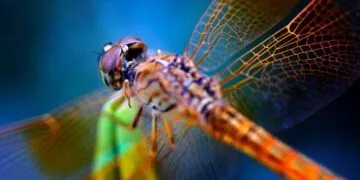Ahh, butterflies… Whether they’re in the pit of our stomachs, floating over lush pastures or as stickers on a colorful notebook, butterflies are beautiful creatures.
They bring feelings of joy & happiness bringing us back to our childhood memories
But could there be more than meets the eye about these wonderful creatures?
Well there is actually, and in this article, we’re going to look at 30 interesting facts about butterflies you probably never heard about!
There are over 17,500 recorded butterfly species in the whole world. Out of this number, 750 can be found in America.
Butterflies belong to the Lepidoptera class of insects which are characterized by their large scaly wings.
The Cabbage White specie of butterfly is the most commonly found in the US. While they are called Cabbage White, they are characterized by their two black markings at the top of their wings.
Monarch butterflies migrate to escape from the cold, not to procreate contrarily to popular belief.
Monarch butterflies are the only insect in the whole world that travels over 2,500 miles on average every winter.
However, while the Monarch is the only butterfly to cover this wide a distance, many butterfly species flee weather conditions in the winter, such as the Clouded Skipper, Red Admiral, Cloudless Sulfur and American Lady just to name a few.
The North American Monarch is one of the species that has been the most severely impacted by recent climate changes, with their numbers seeing dips and spikes over the last few years.
Butterflies don’t taste with taste buds, but rather sensors located under their feet.
A group of butterflies is known as a flutter.
Butterflies can see beyond the ultraviolet spectrum and their eyes consist of a network of 6000 lenses.

Did you know that many adult butterflies do not excrete waste at all? As a matter of fact, many adult butterflies use everything they eat as energy.
Contrarily to popular perception, the wings of butterflies are totally clear and the colors we see are the effect of light reflecting on the tiny scales covering them.
The wings of butterflies move in a figure 8 motion.
Butterflies can vary greatly in size. The biggest butterfly specie has a 12 inch wingspan, while the smallest ever recorded only covers half an inch.
Some butterflies can be very picky about where they lay their eggs. As a matter of fact, some butterflies will only lay their eggs in one type of plant.
The first thing a caterpillar eats after it hatches from its cocoon is usually the shell of the cocoon itself.
In some places, you can find so many caterpillars feeding on plants that you can actually hear them munching.
The time it takes a caterpillar to evolve into a butterfly is usually between 10 and 15 days depending on the particular specie.
Butterflies are cold blooded creatures for the most part.
Some butterfly species are extremely fast. As a matter of fact, the Skipper Butterfly can fly faster than a horse can run.

Butterflies have long tongues that are shaped like tubes that gives them the ability to soak up food instead of sipping it.
Male butterflies engage in what is called “puddling”. In fact, many male butterflies get nourishment by drinking water from mud puddles, which allows them to extract much needed minerals.
A group of butterflies puddling together is referred to as a “puddle club”.
Some species of butterflies drink blood coming from open wounds of other animals.
Many scientists thought butterflies were completely deaf until they first identified butterfly ears in 2012.
The Common Buckeye Butterfly is considered as one of the most striking species of butterflies with its wide upper wing bars and big, multicolored eyespots.
The Giant Swallowtail Butterfly is one of the biggest butterfly species on the planet, with wings spanning from 4 to 7 inches.
The adult butterfly only lives 3 to 4 weeks in average.
Many butterfly species are polymorphic and have the ability to blend in with their surrounding environment.
Butterflies cannot fly if the air temperature falls under 55 degrees Fahrenheit. Since butterflies are cold blooded animals, they cannot regulate their body temperature, which renders them completely immobile in cold weather.
So there you have it, 30 great facts about butterflies!
Next time you see a larvae munching on leaves, or see them floating around your yard, remember that these little flying flowers are much more than just mere insects.
You’ll now be able to appreciate them for what they truly are, tiny little miracles of nature.

















